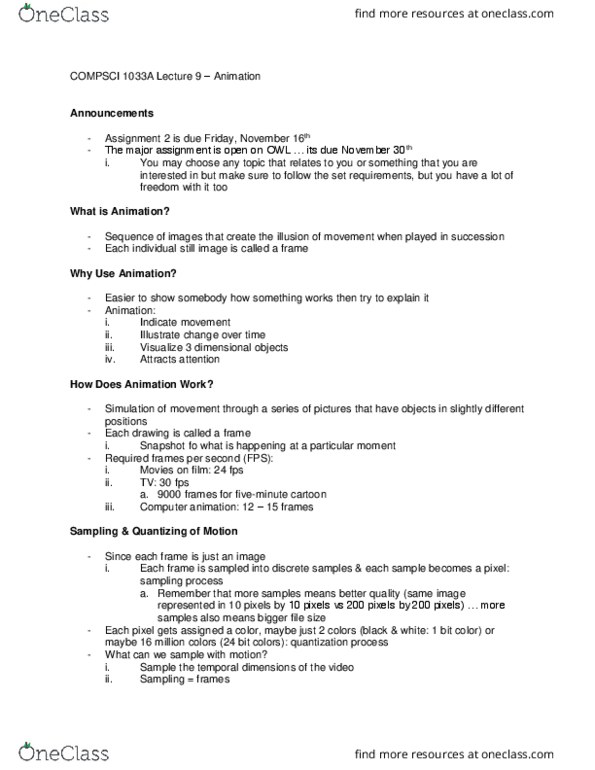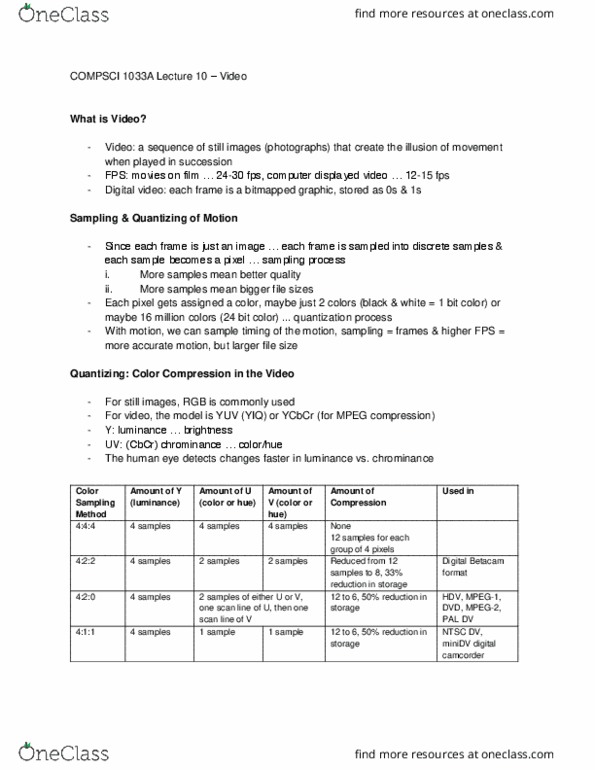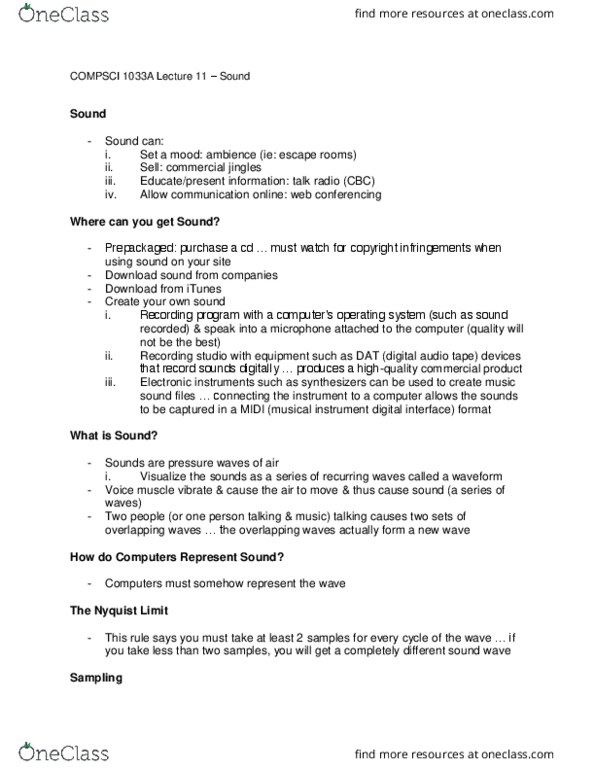Computer Science 1033A/B Lecture Notes - Lecture 11: Betacam, Chrominance, Dv
COMPSCI 1033A/B verified notes
11/12View all
Document Summary
Video: a sequence of still images (photographs) that create the illusion of movement when played in succession. Fps: movies on film 24-30 fps, computer displayed video 12-15 fps. Digital video: each frame is a bitmapped graphic, stored as 0s & 1s. Since each frame is just an image each frame is sampled into discrete samples & each sample becomes a pixel sampling process. Each pixel gets assigned a color, maybe just 2 colors (black & white = 1 bit color) or maybe 16 million colors (24 bit color) quantization process. With motion, we can sample timing of the motion, sampling = frames & higher fps = more accurate motion, but larger file size. For still images, rgb is commonly used. For video, the model is yuv (yiq) or ycbcr (for mpeg compression) The human eye detects changes faster in luminance vs. chrominance. 2 samples of either u or v, one scan line of u, then one scan line of v.




